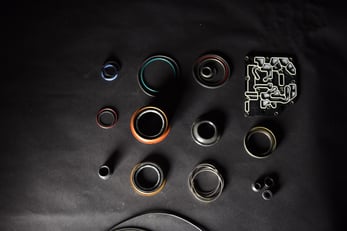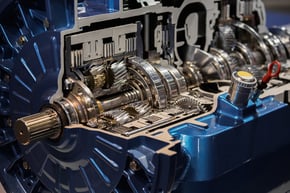Why It Matters What Your Transmission Seals Are Made Of
 In almost every industry, the final product can only perform as well as the materials inside it. This is especially true when it comes to the automotive aftermarket, with transmission seals in particular. Every manufacturer uses a wide variety of different raw materials to produce its sealing components, and different materials are best suited for different functions and applications. Considering the overwhelming amount of possibilities when it comes to the materials inside transmission seals, some rebuilders fail to really research what they're putting into the vehicles in their shop. Unfortunately, this is a misstep with long-reaching repercussions.
In almost every industry, the final product can only perform as well as the materials inside it. This is especially true when it comes to the automotive aftermarket, with transmission seals in particular. Every manufacturer uses a wide variety of different raw materials to produce its sealing components, and different materials are best suited for different functions and applications. Considering the overwhelming amount of possibilities when it comes to the materials inside transmission seals, some rebuilders fail to really research what they're putting into the vehicles in their shop. Unfortunately, this is a misstep with long-reaching repercussions.
While there's no simple answer as to what material all seals should be made from, it's incredibly important to know which raw materials your seal manufacturer is using and what benefits those materials provide. Here's our guide to evaluating the raw materials that make up the sealing components in your transmission overhaul kit.
What To Look For In Sealing Component Materials
 In the most basic sense, transmission seals are made from elastomers, or materials with elastic qualities, so that they're able to move, stretch, and adapt to the conditions inside a functioning transmission unit while preventing leaks. Most manufacturers create the soft parts inside their overhaul kits using a range of plastics, silicones, synthetic rubbers, polyurethane, and any assortment of proprietary materials as well.
In the most basic sense, transmission seals are made from elastomers, or materials with elastic qualities, so that they're able to move, stretch, and adapt to the conditions inside a functioning transmission unit while preventing leaks. Most manufacturers create the soft parts inside their overhaul kits using a range of plastics, silicones, synthetic rubbers, polyurethane, and any assortment of proprietary materials as well.
While diving into the material science of every raw material would be a lengthy process, what rebuilders need to know is that sealing materials should be carefully chosen for the specific function of the final seal. For example, polyacrylate rubber holds up well under high temperatures, synthetic replacements like silicone and nitrile allow seals to bond with their metal shells.
What's even more important than the exact materials inside your seals are the benefits they provide, which aftermarket brands should be clear and transparent about. When researching transmission sealing components, here's what to look for when it comes to their raw material makeup:
- Overall quality and durability: Are the materials made to last? Do they hold up under pressure? Are they rigorously tested for long-term success? Your aftermarket provider should be abundantly clear about the quality of its seals and have the proof to back up its claims.
- Friction reduction: Especially as today's transmissions add more and more gears, certain advanced polymers provide better strength and oil resistance at high pressure points to produce as little friction as possible.
- Weight reduction: Lighter components lead to more fuel efficiency and fewer emissions on the road, so lighter materials should also be toward the top of your checklist when it comes to sealing.
- OE (or better) materials: The top aftermarket sealing manufacturers have deep industry connections to OE manufacturers. With access to the OE parts, these manufacturers use an FTIR (Fourier Transform Infrared Spectroscopy) machine to identify OE materials and base their aftermarket offerings on the original component. Product engineers can use this information to choose the corresponding material, and in many cases, improve upon it in the aftermarket.
Why the Raw Materials Matter to Transmission Rebuilders
If there's one thing to take away from our sealing materials discussion, it's this: quality comes from within. The design on the outside and the overall kit composition are incredibly important too, but in order to bring the greatest value and benefits to your shop, it's critical that the transmission seals in your overhaul kits are made from materials that get the job done. All it takes is a little research to find out what's really in those soft parts, or to find a overhaul kit brand that puts 100% of its expertise and effort into the components it develops. When what's inside your seals is a huge factor in determining whether your rebuild is a success or a comeback, it's worth digging into the specifics.


